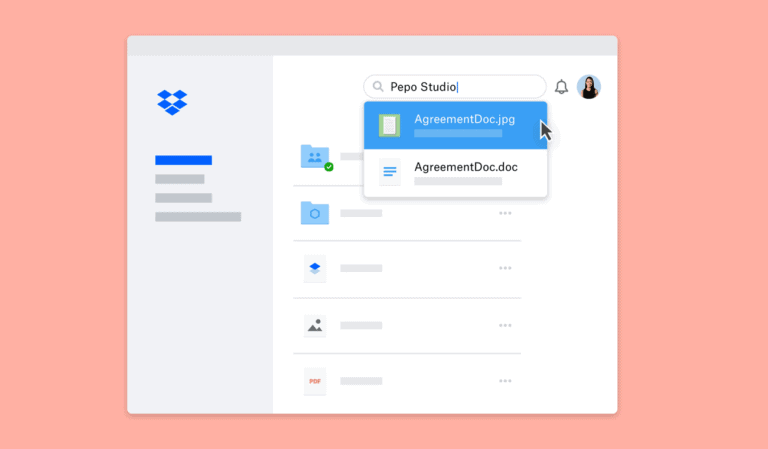Dropbox is launching Dash, an AI-powered universal search and summarization engine.
This week, Dropbox announced a new suite of AI-based features to its industry-leading cloud storage and file-sharing platform. “Dropbox Dash is AI-powered universal search that connects all of your tools, content, and apps in a single search bar”, the company explained in a blog post.
The new solution includes connectors to major platforms like Google Workspace, Microsoft Outlook, Salesforce, and more, according to Dropbox. “Now you can skip those time-consuming tasks like toggling between apps to share content, join a meeting, and find a deck your teammate shared”, the blog boasts.
Eliminating the “work about work” problem
Dropbox notes that people spend a large part of their workday navigating between apps and content. The company calls this “work about work.” A McKinsey study found that knowledge workers spend almost 9 hours a week just looking for files and content. In addition, research by RingCentral found that 69% of such workers spend up to 60 minutes a day navigating between apps.
To solve the problem of “workplace chaos”, Dropbox decided to “build a tool that can help you spend less time searching and organizing all your content, and more time efficiently doing your best work”.
Here’s what’s new
In addition to universal search, the Dropbox Dash browser extension includes additional features, the first of which is called Stacks. These are “smart collections” for the user’s links that offer a quick way to save, organize, and retrieve URLs. Stacks provide a shareable, organizational layer for cloud content – Similar to how files have folders and songs have playlists.
Another feature is the Start Page. This single dashboard allows the user to access Dash universal search, view Stacks, get shortcuts to recent work, and start meetings. This will make it “easier to navigate your day and get back to your most important work”, the company claims.
Dropbox says it is just getting started with AI. In the near future, Dash can answer questions and surface relevant content using generative AI to parse a user’s information.
